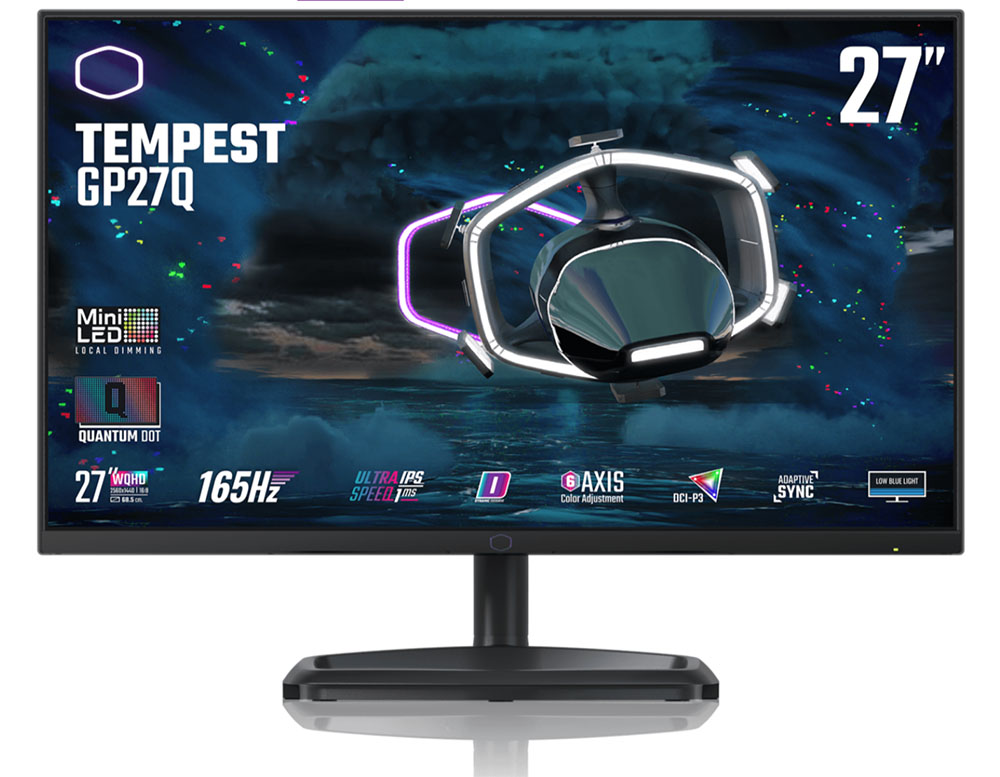Why you can trust Tom's Hardware
As I wrote this review, I continued to be impressed by the value proposition of the Cooler Master Tempest GP27Q. Mini LED is still a new and premium technology, and it has only recently reached the $1,000 range. It is astounding that you can get every advantage of Mini LED for $550, with the only sacrifice being QHD resolution.
I’ve often said that frame rate is more important than pixel density. When you’re playing a game, it’s the motion resolution that counts. Higher frame rates mean smoother motion; it’s that simple. 4K comes mostly in the 144 Hz flavor with only a single monitor, Samsung’s Neo G8 hitting 240 Hz. And in practice, you’ll need an extremely expensive video card to approach those speeds. A QHD monitor, on the other hand, can easily hit 165fps with a less-costly system requirement.
The GP27Q delivers every feature and performance metric of its more expensive stablemate, the GP27U. I verified its peak HDR output at over 1,200 nits. It beats its claimed color volume spec with nearly 113% coverage of DCI-P3. It even approaches the brass ring, Rec.2020, close enough that I can call it a Rec.2020 display. And with its 576 dimming zones, contrast in both SDR and HDR is infinite when local dimming is turned on. It looks amazing when that happens.
Gaming performance is equally impressive, with one of the best overdrives I’ve seen and a backlight strobe that doesn’t create artifacts. The user has many choices for video processing, all of them good. The only bummer is a lack of Adaptive-Sync in HDR mode. But during my gaming sessions, I didn’t notice its absence.
Honestly, all you have to know is that the Cooler Master Tempest GP27Q is a Mini LED monitor for $550, which is significant. That it’s also a stunning-looking, great playing gaming monitor, is icing on the cake.
MORE: Best Gaming Monitors
MORE: How We Test PC Monitors
Get Tom's Hardware's best news and in-depth reviews, straight to your inbox.
MORE: How to Buy a PC Monitor
MORE: How to Choose the Best HDR Monitor

Christian Eberle is a Contributing Editor for Tom's Hardware US. He's a veteran reviewer of A/V equipment, specializing in monitors. Christian began his obsession with tech when he built his first PC in 1991, a 286 running DOS 3.0 at a blazing 12MHz. In 2006, he undertook training from the Imaging Science Foundation in video calibration and testing and thus started a passion for precise imaging that persists to this day. He is also a professional musician with a degree from the New England Conservatory as a classical bassoonist which he used to good effect as a performer with the West Point Army Band from 1987 to 2013. He enjoys watching movies and listening to high-end audio in his custom-built home theater and can be seen riding trails near his home on a race-ready ICE VTX recumbent trike. Christian enjoys the endless summer in Florida where he lives with his wife and Chihuahua and plays with orchestras around the state.
-
cknobman Finally something not obcenely priced!Reply
Also if you want the 4k version of this monitor for only $899 you can buy the ktc m27p20 pro off amazon.
KTC is the OEM that makes these monitors for Cooler Master.
KTC also sells a 27 1440p model similar to the one reviewed here but with a VA panel for $500. -
dm29 Dear Christian, please check Cooler Master website. There are updates that allow for both changing settings in HDR mode and use VRR and HDR along.Reply -
ohm-ish It has G-sync, but does that mean I can just hook it up with one usb-C cable from computer, and have G-sync?Reply
Or would that require using the displayport?
